#Egyptian Thebes
Text

Ancient Egyptian mud coffin containing a wooden ushabti. Artist unknown; ca. 1580-1479 BCE (17th-18th Dynasty, late Second Intermediate Period or early New Kingdom). Found at Thebes; now in the Metropolitan Museum of Art.
#art#art history#ancient art#Egypt#Ancient Egypt#Egyptian art#Ancient Egyptian art#Egyptian religion#Ancient Egyptian religion#kemetic#shabti#ushabti#shawabty#coffin#woodwork#carving#earthwork#Second Intermediate Period#New Kingdom#Egyptian Thebes#Metropolitan Museum of Art
237 notes
·
View notes
Text
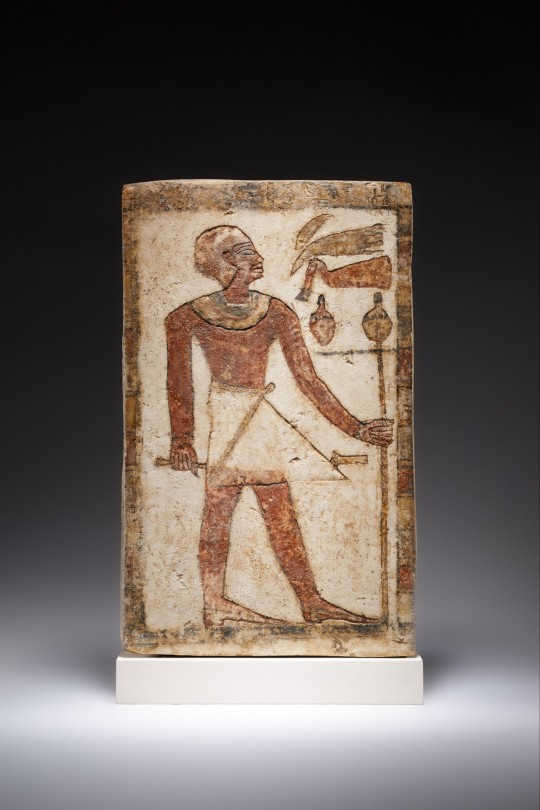
~ Stela of a Man.
Period: Middle Kingdom, 11th Dynasty
Date: ca. 2030–1981 B.C.
Place oforigin: Egypt, Upper Egypt, Thebes, Deir el-Bahri, Cemetery 100, Tomb TT 114, MMA excavations, 1926–27
Medium: Limestone, paint
#ancient#ancient art#history#museum#archeology#ancient egypt#ancient sculpture#ancient history#archaeology#egyptian#egyptology#Egypt#stela of a man#11th Dynasty#middle kingdom#thebes#ca. 2030 b.c.#ca. 1981 b.c.
610 notes
·
View notes
Text
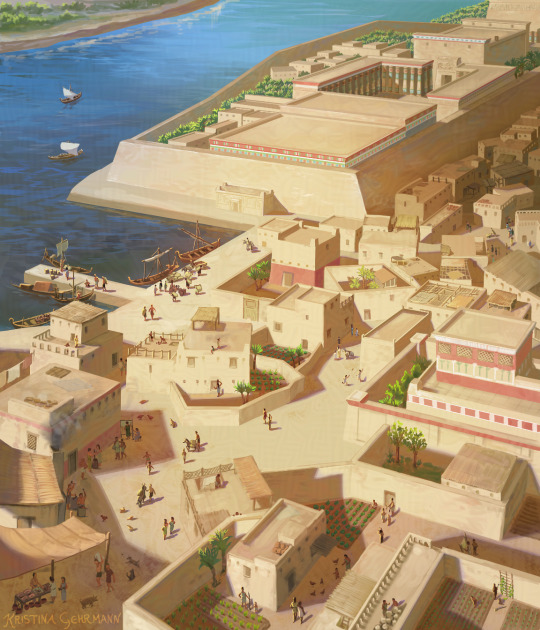
New illustration! A view of ancient Thebe east of the Nile, with the Karnak temple complex. Drawn for a childrens' nonfiction book.
Client: Noordhoff
#digital illustration#history#ancient egypt#ancient history#thebe#luxor#karnak#egyptian#book illustration
94 notes
·
View notes
Text
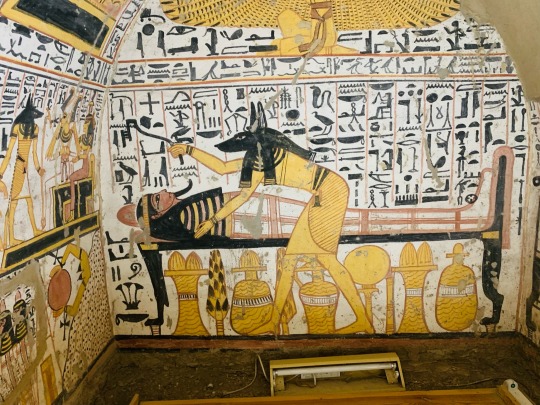
Anubis presiding over the process of mummification
82 notes
·
View notes
Text

In the "House of Eternity" belonging to Royal Prince Khaemwaset, the son of King Ramses III, located in QV44, west of 'Uaset'-Thebes, a depiction showcases the God Shu, offspring of Ra, with His right hand extended in a gesture of blessing, adorned with the symbolic feather.
Learn more / Daha fazlası
https://www.archaeologs.com/w/shu/
#archaeologs#archaeology#archaeological#dictionary#history#egypt#egyptian#god#myhtology#egyptian religion#shu#the god shu#thebes#ra#arkeoloji#tarih#sanat#mitoloji#mısır mitolojisi
92 notes
·
View notes
Note
How come there's an Egyptian city called Thebes like there's one in Greece? Was the Greek city first formed and the Egyptian one got it's name when it was a Greek colony?
Due to the prominence of the Greek language in the ancient and early medieval world, the vast amount of Greek literature and its extensive studies, a huge number of ancient places and peoples' names are known to us nowadays through their Greek version and not the original.
While the Greek city of Thebes is the third oldest (still existing) city of Europe, the Egyptian Thebes was older, dating back to 3200 BC. In Egyptian the city was actually known as Niwt, Niwt. rst (Southern City) or Was.t (City of the Scepter), which was also the name of the general region the city was the metropolis of.
It was called Thebes (Thebae) by the Greeks already in the Homeric epics (very early Archaic period), long before the colonization, but still after the Greek city of Thebes had been founded in the 2nd millenium BC. Homer made the distinction as such: Thebes-of-a-hundred-gates was Was. t (Θῆβαι ἑκατόμπυλοι, Thēbae hekatómpyloi) while Thebes-of-the-seven-gates (Θῆβαι ἑπτάπυλοι, Thēbae heptápyloi) was the Thebes in Greece. So apparently the Egyptian names were challenging for Greek phonology so the name of a Greek city was used to address the Egyptian city as well. There is also the theory that Egyptian Thebes was also sometimes called "The Temple" after the large temple that was its landmark, and this in Ancient Egyptian sounded something like "ta jpt", and perhaps Greeks thought "Thebae" was the closest they could do.
#ancient greece#ancient egypt#thebes#ancient history#greek history#egyptian history#anon#ask#greek facts
79 notes
·
View notes
Text
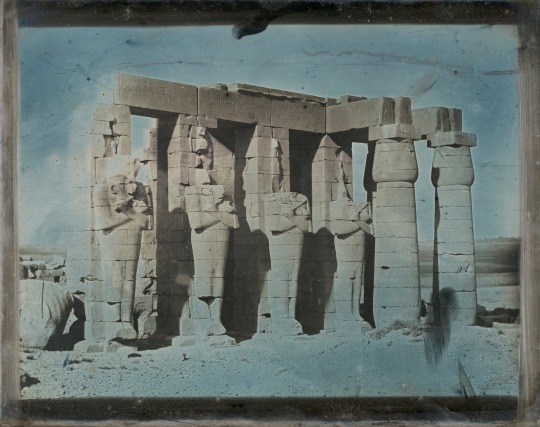
Joseph-Philibert Girault de Prangey (French, 1804-1892)
Ramesseum, Thebes, Daguerreotype
1844
#Joseph-Philibert Girault de Prangey#french artist#french art#french photographer#French photography#daguerreotype#vintage photography#ancient history#egypt#thebes#ancient egypt#egyptian art#early photography#egyptian history#art history#aesthetictumblr#tumblraesthetic#tumblrpic#tumblrpictures#tumblr art#tumblrstyle#artists on tumblr#aesthetic#modern art#photo aesthetic#beauty
28 notes
·
View notes
Text

The Statues of Memnon, Thebes by Carl Friedrich Heinrich Werner
#statues#memnon#thebes#egypt#ancient egypt#egyptians#moon#carl friedrich heinrich werner#carl werner#art#painting#history#ancient#architecture
473 notes
·
View notes
Photo

Banquet scene, from Thebes, c.1400 BC (wall painting) by Egyptian 18th Dynasty
wall painting, British Museum, London, UK
#Egyptian 18th Dynasty#fineart#art#painting#artwork#masterpiece#fineartprint#gallery#museum#wall painting#thebes#wall#egyptian#dynasty#egypt#british museum#london
19 notes
·
View notes
Text
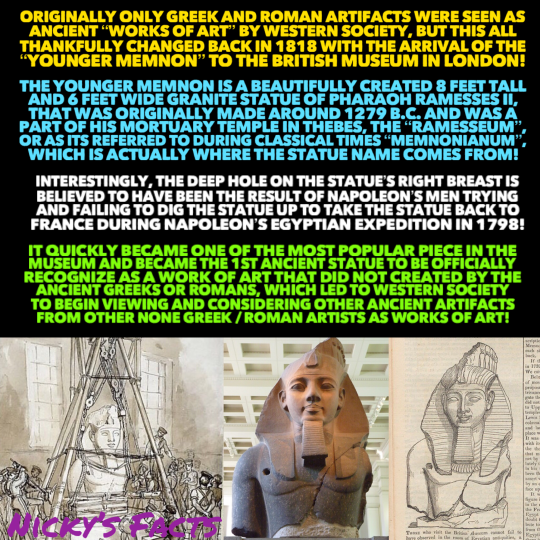
The Younger Memnon is probably one of the most impactful sculptures in world history, yet very few know about it today𓀲
#history#younger memnon#memnonianum#ancient egypt#ramesseum#art history#british museum#ancient#sculpture#ramesses ii#egyptian history#thebes#historical art#napoleon bonaparte#egyptology#victorian age#racism#western world#ancient history#artifacts#ancient greece#ancient rome#work of art#1800s#ancient art#nickys facts
2 notes
·
View notes
Text
youtube
Thebes (1904)
#thebes#ancient egypt#egyptian#egyptology#egyptian pharaoh#egyptian pyramids#egypt#upper egypt#1904#1900s#early 1900s#the mummy#ac origins#assassins creed origins#the prince of egypt#gods of egypt#exodus#death on the nile#the mummy returns#stargate#raiders of the lost ark#indiana jones#assassins creed#cairo#pyramids#ancient city#egyptian art#egyptian aesthetic#egyptian mythology#egyptian music
2 notes
·
View notes
Text

Head of the 12th Dynasty pharaoh Senusret III (r. 1878-1839 BCE), shown wearing the white crown of Upper Egypt. From Karnak; now in the Neues Museum, Berlin. Photo credit: Osama Shukir Muhammed Amin FRCP/Wikimedia Commons.
#art#art history#ancient art#Egypt#Ancient Egypt#Egyptian art#Ancient Egyptian art#Senusret III#Senwosret III#12th Dynasty#Twelfth Dynasty#Middle Kingdom#sculpture#portrait sculpture#stonework#carving#Egyptian Thebes#Karnak#Neues Museum
170 notes
·
View notes
Text
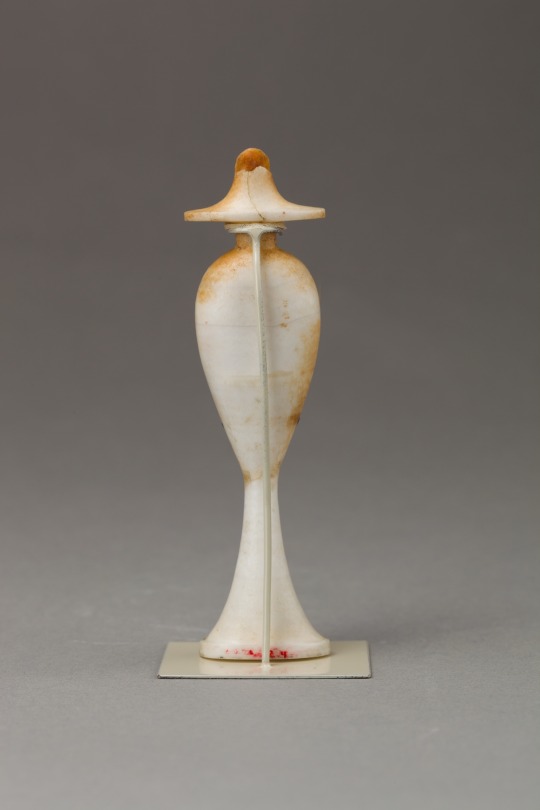


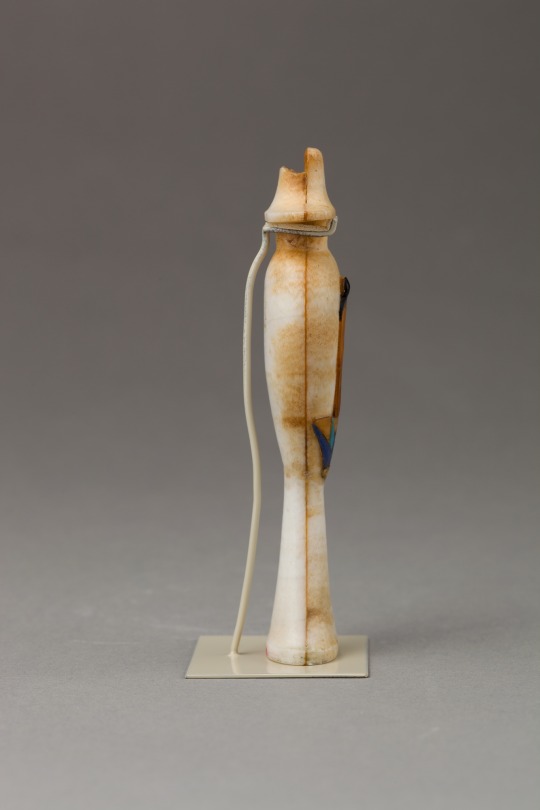
~ Perfume bottle in the shape of a hes-vase inlaid with the figure of a princess.
Period: New Kingdom, Amarna Period; 18th Dynasty; Reign of Akhenaten
Date: ca. 1353–1336 B.C.
Place of origin: Egypt; Possibly from Upper Egypt, Thebes
Medium: Travertine (Egyptian alabaster), carnelian, obsidian,gold, and colored glass inlay.
#ancient#ancient art#history#museum#archeology#ancient egypt#ancient history#archaeology#egyptology#egyptian#egypt#perfume bottle#hes-vase#princess#amarna period#18th dynasty#new kingdom#Akhenaten#thebes#ca. 1353 b.c.#ca. 1336 b.c.
766 notes
·
View notes
Text

Ra, in the form of a falcon, hanging out in the Underworld (Duat).
#Ra#Egypt#Egyptian#ancient egypt#ancient egyptian#egyptology#Deir el medina#Waset#thebes#Luxor#archaeology#hieroglyphic#Kemet#Kemetic#Kemeticism
128 notes
·
View notes
Text
Ivory Plaque from the Lid of Coffer, Tut Ankh Amun and Ankh Esen Amun in Garden. From the Tomb of Tutankhamun (KV62), Valley of the Kings, West Thebes. Now in the Egyptian Museum, Cairo. JE 61477
Tutankhamun receives flowers from his wife Queen Ankhesenamun.

#art#artwork#archaeology#ancient egyptian artifacts#egypt#egyptian history#archaeological sites#Tut Ankh Amun#Tutankhamun#famous kings#Egyptian Rulers#ancient rulers#ancient artifacts#egyptian#valley of the kings#ivory plaque#West Thebes#egyptian museum
7 notes
·
View notes
Text

🖼Oedipus and the Sphinx by Gustave Moreau (1864) in the Metropolian Museum in New York.
The Greek sphinx was clearly inspired by the Egyptian sphinx, but the Greeks modified it and made it their own. The Greek sphinx had a woman’s face and breasts, a lion’s body, and a bird’s wings. The word sphinx is Greek (σφίγξ), and it means “strangler,” perhaps stemming from the fact that lionesses usually kill their prey by strangling it.
Since sphinxes were very intimidating, the Greeks frequently put them on gravestones, to frighten away would-be grave robbers. This use is called “apotropaic”—meaning “causing someone to turn away.” Most of the examples of ancient Greek sphinxes that we have today are from ancient gravestones.
In Greek mythology, the sphinx was considered to be a woman. One sphinx was only considered to exist in Greek mythology; she was the daughter of Orthus, and either Echidna or Chimera. Apart from the human head and the body of the lion, she also had the wings of an eagle and the tail of a serpent.
According to the myth, she dwelt outside the city of Thebes, and asked a riddle to all travellers, in order to let them pass. The riddle she asked is a famous one; which is the creature that has one voice, but has four feet in the morning, two feet in the afternoon, and three feet at night? Anyone who struggled to answer was eaten by the monster. However, Oedipus managed to answer correctly; he replied "the man", who crawls on all fours as a baby, walks on two as an adult, and needs a walking cane when old.
It seems that there was a second riddle following the first; "there are two sisters; one gives birth to the other, who in turn gives birth to the first. Who are they?" The correct answer is "day and night", two words that are both feminine in the Greek language.
After Oedipus correctly answered both questions, the Sphinx killed herself, either by throwing herself off the rock on which she rested, or by devouring herself. This seems to be the literary way in which the ancient Greeks transitioned from the old religious practices, represented by the Sphinx, to the new ones and the establishment of the Olympian deities, represented by Oedipus.
#oedipus#sphinx#riddle of the sphinx#gustave moreau#greek mythology#egyptian mythology#riddles of the sphinx#greek deities#olympian deities#thebes#1864#17th century art#metropolitan museum of art
8 notes
·
View notes